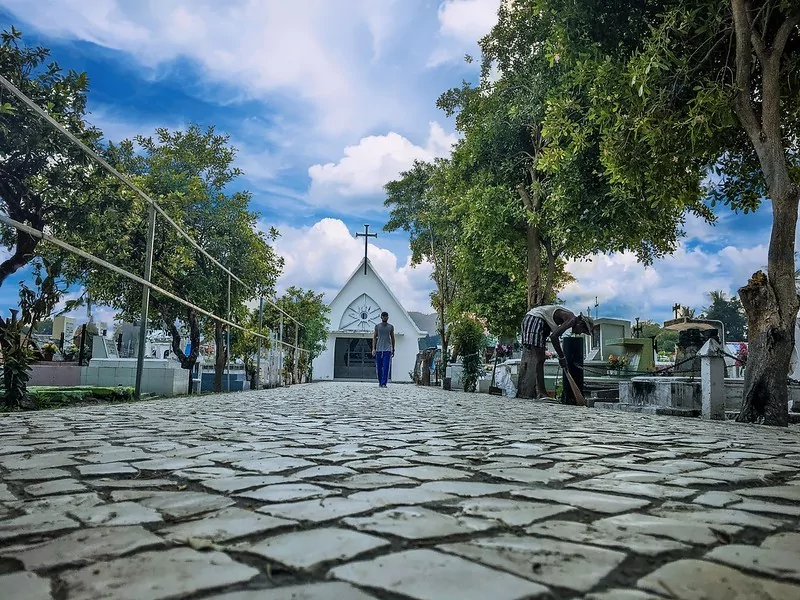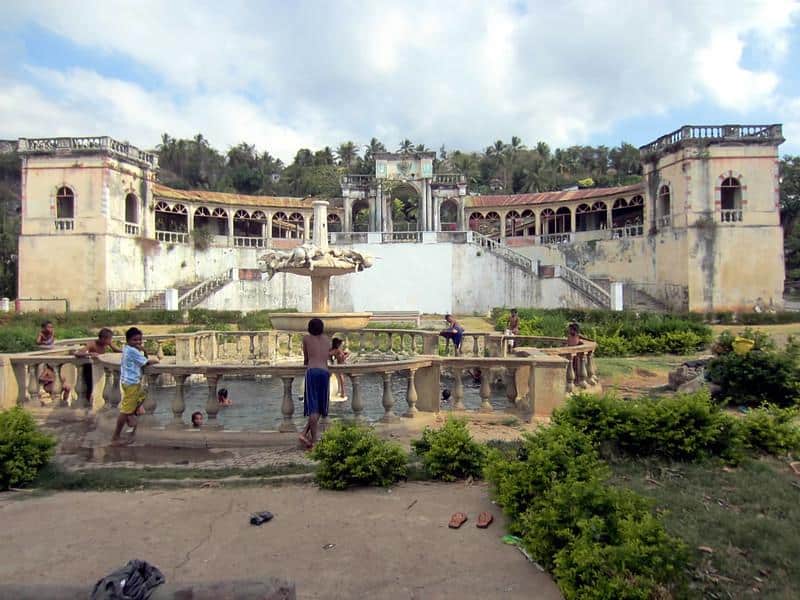
Emerged as an independent nation in 1999 following centuries of Portugese colonization and 24 year of Indonesian occupation, Timor Leste is one of the most recently established countries in the world, yet it is still widely anonymous among most people. Located in the far east of the Indonesian archipelago, it's not the easiest country to access either. If you don't fancy a grueling overland bus journey, flights arrive in Timor Leste from Darwin, North Australia, and Bali. And while it may be a challenge to get there, it's definitely worth the effort. For the intrepid explorer, Timor Leste is an off-the-beaten-track paradise. Pristine, unspoiled beaches with crystal clear waters hog the national coastline.
Dili is the capital and the first point of entry for any visitor to Timor Leste, so you’ll have to spend some time there. Even though it might not be everyone’s favorite city, there is plenty to do in this ever-growing, chaotic capital.
Enjoy a stunning sunset at a delicious oceanfront restaurant for every palate while learning about Timorese resilience and the resistance movement through free local art classes and displays at Arte Moris.
The Cristo Rei statue can be climbed to the best vantage point in the capital, and the Resistance Museum can be visited to learn about the nation’s complicated and bloody past.
Alternatively, stop by the night BBQ market for some freshly grilled seafood, then drive outside of town to dare for sweeping views of the city before stopping by the Tais market for some beautiful local goods.
You can even relax on some of Dili’s white sand beaches during the day, a true rarity as it’s not often the case where a capital city boasts picture-perfect beaches a stone’s throw away from the chaos of its downtown.

The Saint Cruz Cemetery in Dili
photography by: Bro. Jeffrey Pioquinto, SJ
Tatamailau, often referred to as Mount Ramelau, is the tallest mountain in Timor Leste. Standing at just short of 3000 meters, trekking Tatamailau is achievable for walkers of varying strength and endurance.
The mountain’s peak is adorned with a statue of the Virgin Mary and is the site of an annual Christian pilgrimage. But you don’t need to be a religious devotee to appreciate the spectacle that awaits you at the roof of Timor Leste.
If you plan your trek on a clear day and reach the summit by dawn, you will be treated with a sunrise over practically the whole country, featuring views of the rolling mountains below and out to the glistening coastline in the distance.
A hike up the mountain starts from the village of Hatobuilico, where you will head to a trail that begins 2 kilometers up the road. You can also arrange a guide here, which is advisable if you’re planning to climb to the summit in the dark to make in time for the sunrise the day after.

The views down from Mount Ramelau
photography by: Isabel Nolasco
Situated in the eastern part of Timor Leste, the municipality of Baucau is probably the busiest place in the country outside of the capital, Dili. Baucau has a quaint and laid-back old town, dominated by colonial Portuguese architecture, a remnant from Timor Leste’s colonial past.
A natural spring feeds the municipal swimming pool in the city center, which is ideal for spending a couple of hours basking under the sun. If you prefer, you can take a short drive out of town and head to the nearby village of Osolata, where you will be greeted by a mesmerizing coastline of white sand coves and beaches, stretching as far as the eye can see.
Standing out from the rest is the beach at Pantai Rekreasi Uatabo, considered as one of the most iconic in the country. The crystal clear, transparent waters are ideal for swimming, and you might even spot dolphins bobbing in and out of the water a little bit further out to sea.

The old market building in Baucau
photography by: David Stanley
Established in 2007 by the Timor Leste government, Nino Konis Santana National Park covers 1,236 square kilometers and is home to more than 250 bird species, one of which is the critically endangered yellow-crested cockatoo, a foppish and highly intelligent parrot that is native to the forest within the national park.
The park is also home to more than 200 cultural sites of importance to the people of Timor Leste. The settlements within the park are inhabited by native Fataluku people, who consider themselves to be ethnically distinct from the people they share their country with. Their language is indistinguishable to the outside population of Timor Leste.
Visitors to the National Park can visit the many rock art sites that serve a significant cultural value at marriage ceremonies amongst the Fataluku people.
The park itself was given its name to honor national independence hero Nino Konis Santana, who was born in the village of Tutala that is within the borders of the national park.
Oecusse is a special administrative region in Timor Leste, regarded as an official exclave of the nation situated on its western edge. It was one of the first places that Portuguese colonial settlers arrived, and remnants of Oecusse’s colonial past can still be experienced by visitors today.
In 2015, it was named as a Special Zone of Social Market Economy, and a 120 million US$ international airport was opened three years later. It was expected that Oecusse would attract international visitors and residents, but as of 2021, it remains largely unexplored by foreign visitors.
Considered as the capital of Oecusse, the oceanfront town of Pante Macassar is not particularly eye-catching, yet its charming beach promenade, littered with dozens of cafés that host live music concerts, makes it an authentic place to explore.
The outlying town of Lifau is where the Portuguese first disembarked on Timor and was also the first territory occupied by Indonesia after the Portuguese officially left.
In the battle for independence, more than 90% of Pante Macassar was destroyed. Today, the former capital remains underdeveloped and enjoys a slow pace of life, blessed with scores of secluded beaches around.

A rice field on the outskirt of Pante Macassar
photography by: David Palazón, Tatoli ba Kultura
Jaco Island is an offbeat oasis of white sand and an ample aquatic life of coral sharks, sea turtles, dolphins, and technicolour rays, utterly devoid of any semblance of a crowd or tourism. Given that Timor Leste itself doesn’t receive many visitors, Jaco Island is practically unexplored.
The best way to get to the island is by hiring a local fisherman to shuttle you from the mainland to Jaco Island for the day if you want to visit the island. You can also arrange with your guide to catch and prepare your evening meal.
Jaco Island is uninhabited mainly due to its religious significance. The government of Timor Leste has prohibited development on the island, which promises to keep it largely unspoiled for generations to come.
There is only a primitive guesthouse and a camping area for those who wish to spend the night. Bring all of your food and equipment with you, and be sure to seek local advice before heading out. Also, bring back any litter or equipment you take with you.

Jaco Island under a blanket of dark clouds
photography by: Kate Dixon
Home to one of the most bio-diverse reefs in the world, Atauro Island is far accessible, in contrary to the mentioned above island of Jaco. Divers enter the crystal-clear waters to swim up close and personal with the resident pod of dolphins. Still, the incredible variety of marine life here makes this a perfect spot for snorkeling and bathing in shallow, warm waters.
Considering the tropical paradise that you see as soon as you step off the boat, you will be surprised to learn that Atauro Island served as a jail during the Portuguese and Indonesian occupations.
Perhaps because of this fact, the island has remained largely unexplored and unspoiled and gives visitors the excellent opportunity to experience its tranquility and natural charm.
Atauro means goat in the local language, so you can expect to see the surrounding fields and hills Atauro dotted with the animals, which provide an important source of income and livelihood to the local people.

A breathtaking sunset in Atauro Island
photography by: hds